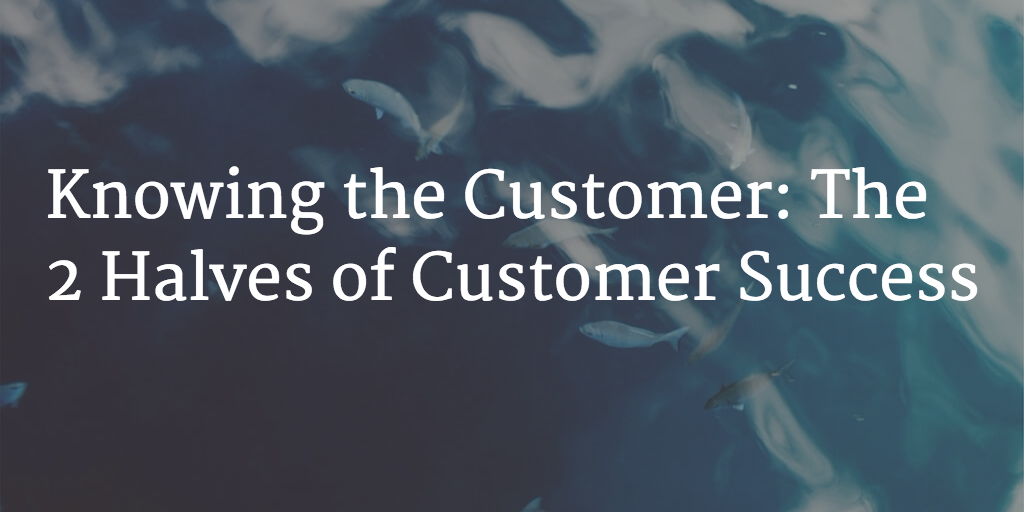“Customer Success” is growing. And not only in buzz. I see companies investing and building these teams at a fast clip. When done right, this trend represents a fantastic opportunity for companies to accelerate profitable growth. But doing it right requires joining two different disciplines that many companies often overlook.
First, we need to be honest with ourselves. In most companies, the Customer Success teams are essentially rebranded versions of Account Managers, which in turn are rebranded versions of “Sales for Current Customers.” In other words, for most companies the “Customer Success” team exists to ensure high renewal rates and drive up-sell/cross-sell opportunities, and often these positions carry sales quotas. How else can a company justify the investment?
The objective of ensuring high retention and new revenue streams is a good one. But it’s hardly “customer success” (and smells more like “vendor success” to me). So how should a Customer Success team operate and still manage to meet the objective of accelerating financial growth? That’s where we need to join two disciplines, both of which involve knowing the customer.
The First Half
The first way to know your customer involves turning your existing customer data into insights. For many companies customer data exists in at least 3 different places:
- The CRM system will have customer contacts, order (bookings) history, and pipeline information.
- The ERP/Financial system contains the actual invoice and payment history.
- An “operational” system that shows utilization of purchased products (most often found in SaaS companies and other firms that have registration or “phone home” functions embedded within their products)
Mining these systems doesn’t have to be long and complex, but asking individual Customer Success Managers (CSMs) to sift through these databases is out of the question. The good news is this process can be automated and made easy via some great B2B focused solutions. For example, instead of looking through rows and rows of individual customer records, today’s CSM-oriented solutions will proactively answer a few key questions:
- Is the current contract expiring soon?
- Historically, how frequently did the customer place new orders? And how long has it been since the customer’s last purchase (that is, should we ordinarily have seen a purchase from the customer by now?)
- Is the customer using everything they have purchased, or is there “shelf ware”?
Answering these types of questions will help the CSM know if the customer is in fact still your customer. CSMs gain early-warning indicators to know where to focus and prioritize their precious time. We’ve learned here if we have the customer’s “mind.” But the CSM hasn’t yet learned if they have their customer’s “heart” – is the customer really dedicated to the relationship?
I am often asked, “Who cares if we have the customer’s heart? We still have the renewal and isn’t that what matters?” Securing the renewal is important, but if the customer is not truly “with” you – that is, that they are “trapped” (for example due to expensive switching costs) – then you’re missing out on 2 critical elements:
- Are there potential cross-sell / up-sell opportunities? An unhappy customer is unlikely to send more business your way.
- The customer may be spreading negative word-of-mouth that damage your company. It’s true that trapped customers still provide a revenue stream, but consider how many additional sales opportunities were never even presented due to the negative buzz from your trapped customers.
The Second Half
Beyond sending surveys to your customer base, it’s critical to find out if there’s a gap in your company’s contribution to an individual customer’s success. This isn’t about finding out about how well the implementation went, if a recent service transaction was satisfying, or even if that person is “likely to recommend” (although that last one certainly helps to determine if you have the customer’s heart). It’s about knowing how the customer defines success, and how your firm is facilitating it.
A well-designed questionnaire and survey process will accelerate the CSM’s understanding of customer success. B2B solutions deal with many contacts inside one “customer.” Gaining this candid feedback from all the contacts that can impact purchase decisions – at the right time – ensures the CSM can effectively scale.
Just make sure you think of the survey process as a dialog: You start the conversation by asking the customer for feedback, and the customer responds (hopefully. If they don’t, that’s quite telling on its own, and a whole other issue to address). But now that the conversation has been started, it’s much easier for the CSM to continue the dialog to discover and address any gaps in the customer’s ability to achieve their desired success.
CSMs have a tough job. Delivering insights to them that highlight both the hearts (sentiment) AND minds (operations) of customers allows your CSMs to invest their time wisely. Customers that are successful with your firm’s products and services are more likely to want to buy more, especially if they are fully utilizing what they’ve already bought. And the more you can help CSMs trudge through the data (automation!) the more likely they will be to deliver the outcomes you need.

